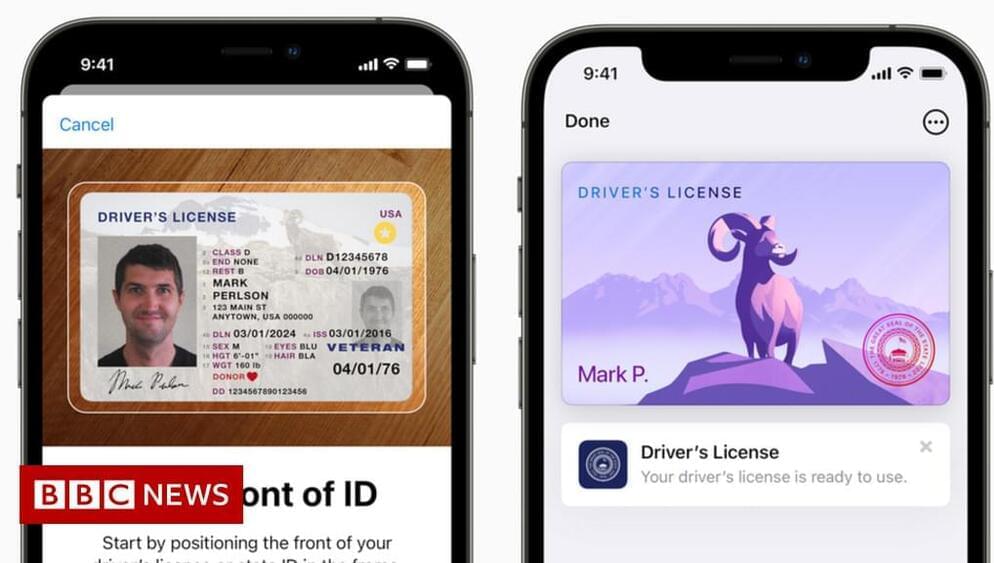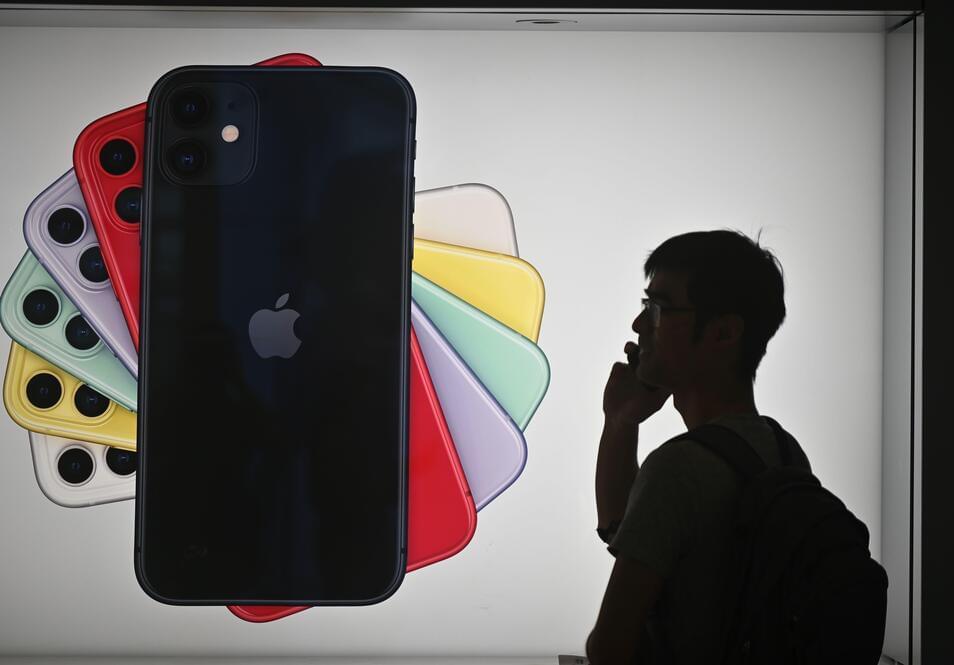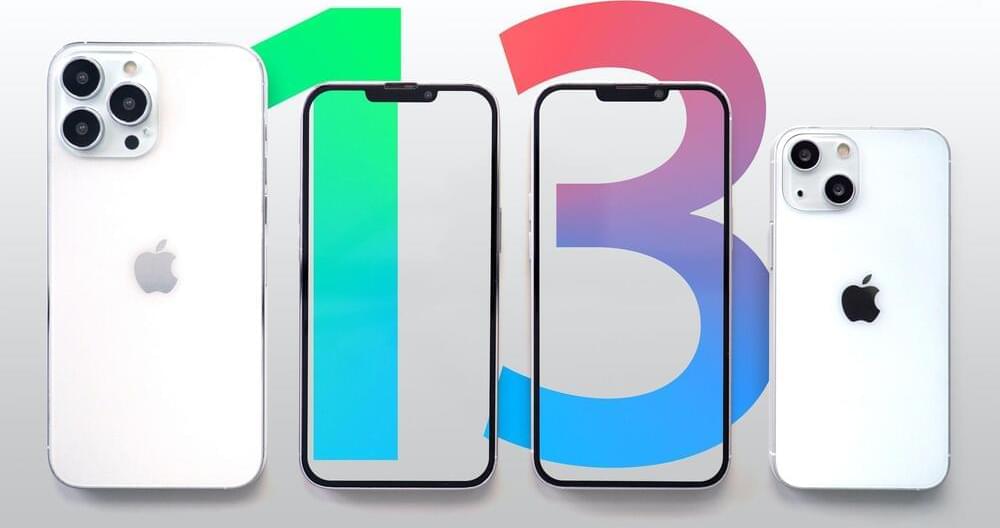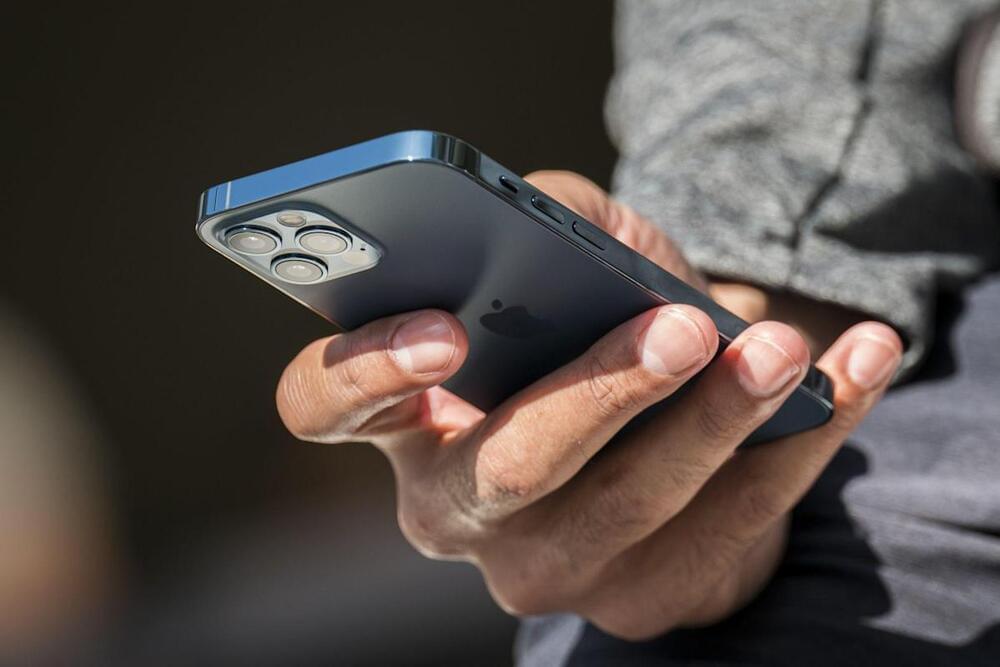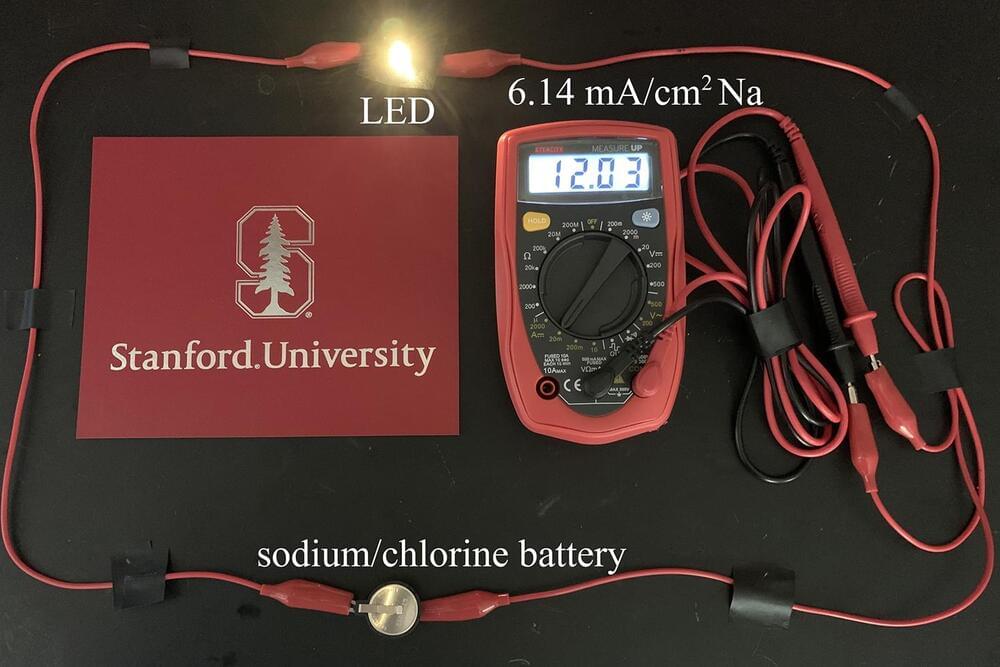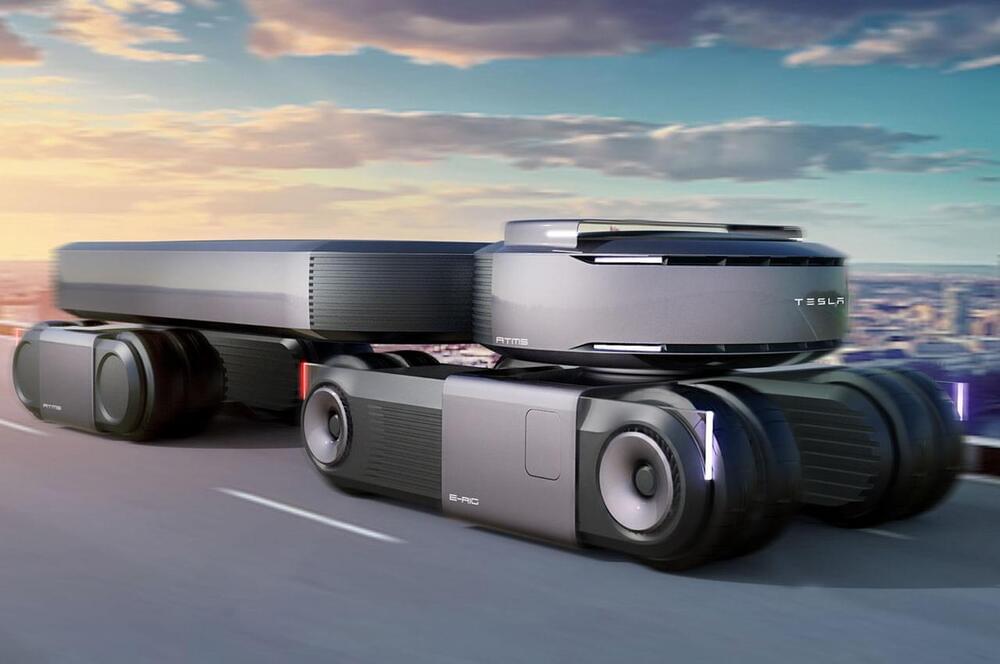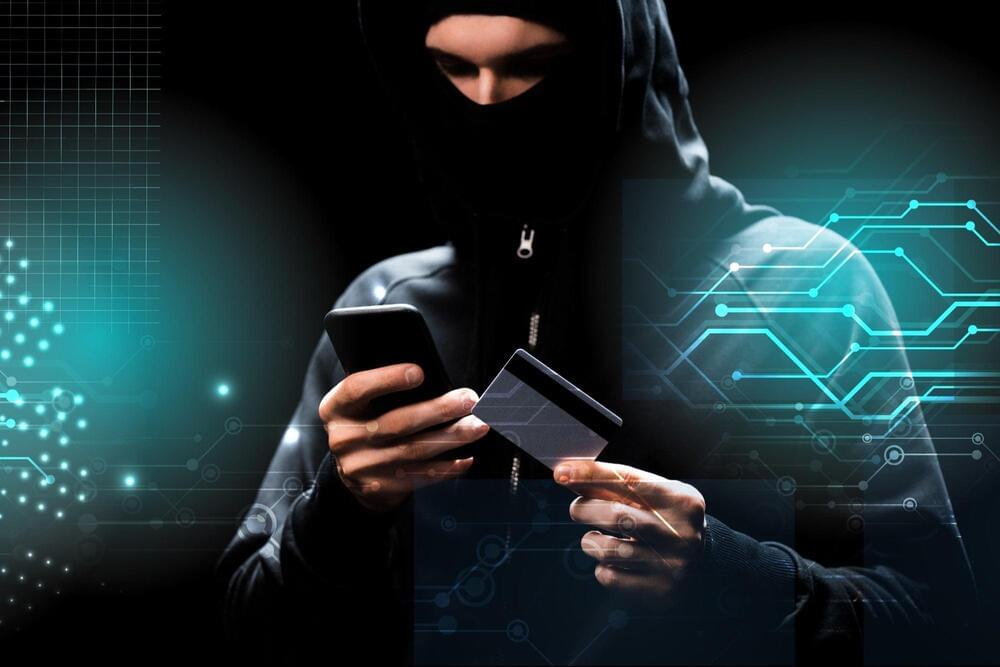Arizona, and Georgia will introduce the system first, with Connecticut, Iowa, Kentucky, Maryland, Oklahoma, and Utah also signed up.
The “first locations” to use the system will be airport security checkpoints run by the Transportation Security Administration (TSA), Apple says.
Americans usually need some form of state ID only to travel by air domestically, unlike other countries, in which a passport is widely used.
Tapping a phone at an identity reader at supported airports will prompt passengers to use their Face ID or fingerprint to authorise sending information to the machine.
“Users do not need to unlock, show, or hand over their device to present their ID,” Apple said.
Apple’s new ID system for its Wallet will be rolled out at airports to start.
